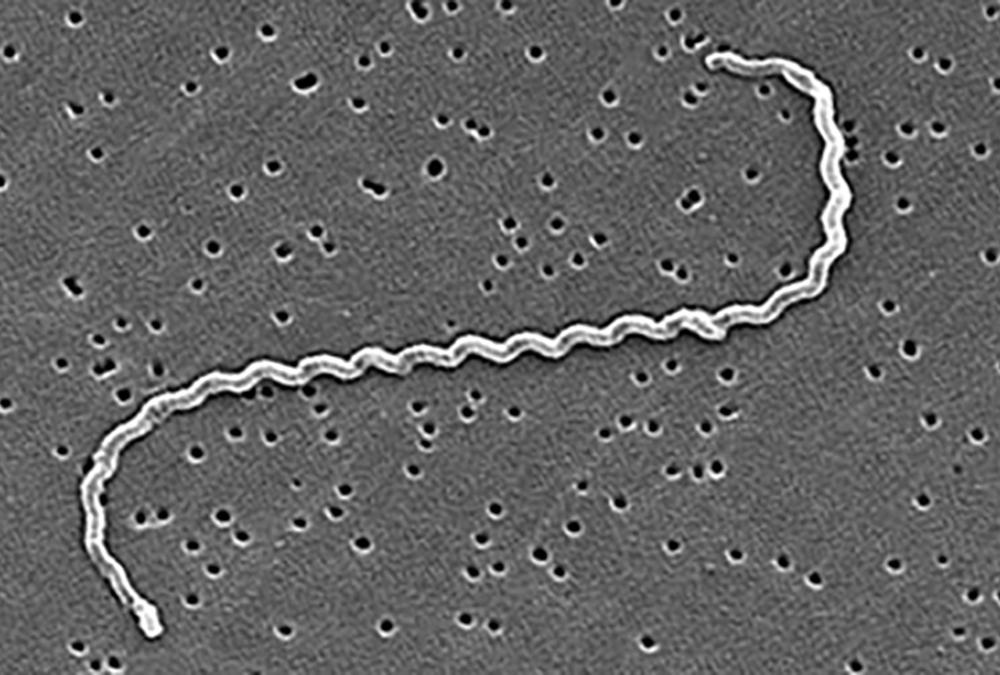Physical Address
304 North Cardinal St.
Dorchester Center, MA 02124
Leptospirosis is a zoonotic bacterial infection caused by pathogenic spirochetes belonging to the genus Leptospira . It has a global distribution and is most prevalent in tropical areas with poor urban infrastructure and heavy rainfall. Leptospirosis is transmitted to humans either by direct contact with infected animals or by contact with soil or water contaminated by rodent urine. The disease ranges in severity from a relatively mild, self-limited infection to a life-threatening, sepsis-like syndrome characterized by the triad of jaundice, acute renal insufficiency, and bleeding, sometimes complicated by severe pulmonary hemorrhage.
The name Leptospira comes from the Greek words for thin ( leptos ) and coil ( speira ). These highly motile bacterial spirochetes measure 0.1 microns in diameter and 6 to 20 microns in length. The trailing end may be hooked when translocating through a liquid medium, thereby giving the organism the shape of a question mark and inspiring the naming of the species Leptospira interrogans ( Fig. 298-1 ), which most commonly causes human infection. However, 64 different species have been described, including pathogens and commensals of host animals as well as free-living, saprophytic species. Leptospiral pathogens include over 25 serogroups and 250 serovars that differ by geographic distribution and host specificity. Leptospiral genomes are characterized by extensive interspecies horizontal gene transfer, which may facilitate adaptation to a broad range of ecologic niches and reservoir host animals. Colonization of the renal tubules of infected animals leads to urinary shedding of the organism in soil and water.

Leptospirosis, which is the most widespread zoonosis ( Chapter 303 ) and a leading cause of morbidity and mortality worldwide, is estimated to cause about 1 million clinical infections and nearly 60,000 deaths each year. Even these numbers are likely to be underestimates, however, because leptospirosis predominantly affects medically underserved populations and is frequently misdiagnosed as dengue ( Chapter 352 ), malaria ( Chapter 316 ), or influenza ( Chapter 332 ) when it presents as a nonspecific acute febrile illness.
Transmission to humans frequently involves rodent reservoir hosts, especially the urban brown rat, Rattus norvegicus , in which the organism is associated with high rates of renal colonization. R. norvegicus appears to become infected with L. interrogans serovar Icterohaemorrhagiae early in life and persistently sheds leptospires in its urine. Other sources include both domestic and wild animals.
Leptospirosis is endemic in many developing countries with high temperatures and rainfall, such as India, Malaysia, and Brazil. Leptospirosis is predominantly a disease of poverty, with high rates of exposure and infection in vulnerable populations living in settings where rodents are able to gain access to human living spaces and where urban flood control infrastructure is inadequate. In such settings, leptospirosis infections spike during heavy rainfalls when rodents are forced from their burrows and leptospires are washed into floodwaters. The incidence of leptospirosis is likely to increase as extreme rainfall events become more common as a result of climate change.
Leptospirosis infections also occur among individuals taking part in adventure travel. For example, participants in the 2000 “Eco-Challenge” in Malaysian Borneo had a 42% infection rate of leptospirosis, presumably because participants floated down the Segama River, which had become swollen by heavy rainfall in the days leading up to the competition. Individuals with prolonged exposure to contaminated water are at higher risk of infection, particularly when cutaneous abrasions are present. The HLA-DQ6 haplotype is an independent risk factor for human infection.
Become a Clinical Tree membership for Full access and enjoy Unlimited articles
If you are a member. Log in here